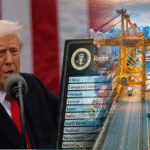
S L Government Weighs Growth, Debt Relief, and Cannabis Export Controversy
- CNL Reporter
- August 16, 2025
- Weekly Economic Review
- Cannabis Export
- 0 Comments
Economic Review
Economic Growth Outlook
Sri Lanka’s economy is projected to grow by 4.5% in 2025, surpassing the World Bank’s estimate of 3.5%. This optimistic forecast follows a 5% growth in 2024, indicating a steady recovery from the 2022 financial crisis.
The Central Bank of Sri Lanka (CBSL) attributes this growth to the ongoing implementation of the $2.9 billion IMF Extended Fund Facility, which has provided critical financial support during the recovery phase. However, the CBSL also cautions that global economic uncertainties and external demand risks could impact future growth.

Sri Lanka has made significant strides in restructuring its external debt, which stood at $37 billion prior to the crisis. The country has reached agreements with key bilateral creditors, including Japan, to restructure approximately $22.5 billion in foreign debt.
Notably, a deal with Japan to restructure $2.5 billion of its debt was concluded in March 2025, allowing for the resumption of suspended infrastructure projects. Additionally, Sri Lanka has negotiated with China for about $4.75 billion in loans.
The restructuring efforts aim to reduce the country’s overall debt by $16.9 billion, with repayment schedules extending from 2027 to 2042. These measures are crucial for restoring fiscal stability and securing continued support from international financial institutions.
Monetary Policy and Inflation Trends
The CBSL has maintained its benchmark interest rate at 7.75% to support economic recovery while keeping inflation under control. Inflation, which had been in deflationary territory since September 2024, is expected to turn positive by the third quarter of 2025.

The CBSL aims to achieve an inflation target of 5% by mid-2026. Despite a recent dip in consumer prices due to lower power and food costs, the central bank anticipates a gradual rise in inflation as demand conditions improve.
Trade Relations and Export Challenges
Economic think tank Institute of Policy (IPS) yesterday warned that the 20% reciprocal tariff unilaterally imposed by the Trump administration could lead to export losses of $ 634 million and put nearly 16,000 jobs at risk, mostly female workers in the apparel industry.
When the US announced the new tariff rate on 31 July, most business chambers in Sri Lanka welcomed the move because it meant a further reduction from an earlier 44% rate. However, even at 20%, the adverse impact is significant.
The apparel sector, Sri Lanka’s second-largest foreign exchange earner, faces challenges due to recent changes in U.S. trade policy. While the reduction of U.S. tariffs from 44% to 20% is a positive development, the sector remains vulnerable to global trade dynamics.

The U.S. has implemented a 10% baseline tariff on all imports, with additional targeted tariffs on specific countries and products. These measures could affect Sri Lanka’s apparel exports, which contributed $4.8 billion in 2024 and employ around 300,000 people.
Cannabis Export Proposal: Economic Potential and Public Debate
The government’s proposal to legalize cannabis cultivation for export has sparked significant public debate. Proponents argue that this initiative could generate substantial foreign exchange earnings, create employment opportunities, and position Sri Lanka as a leader in the global medicinal cannabis market.

However, opponents express concerns about potential social implications, including increased substance abuse and the impact on public health. The government has emphasized the need for stringent regulations and oversight to mitigate these risks. The outcome of this proposal remains uncertain, with ongoing discussions among policymakers, industry stakeholders, and the public.
Chinese-led gem smuggling operations are causing massive losses to Sri Lanka’s struggling economy, with local businesses in traditional gem hubs such as Ratnapura and Beruwala bearing the brunt, The Financial Post has reported.
According to the report, Chinese nationals have allegedly smuggled gemstones worth around Rs. 30 billion from Sri Lanka, bypassing taxes and legal channels. This illicit trade is estimated to cost the government Rs. 38 billion annually in lost Value Added Tax (VAT) revenue.
Investment Promotion Efforts amidst Global Trade Shifts
In response to global trade shifts, Sri Lanka is intensifying efforts to attract foreign investment. The U.S. has implemented a 10% baseline tariff on all imports, with additional targeted tariffs on specific countries and products.
These measures could potentially affect Sri Lanka’s trade relations. In this context, Sri Lanka is focusing on sectors such as information technology, renewable energy, and tourism to diversify its export base and reduce dependency on traditional industries.

The government is also working to improve the business climate by streamlining regulatory processes and enhancing infrastructure. These initiatives aim to bolster the country’s economic resilience and attract sustainable foreign investment.
Conclusion
Sri Lanka’s economic outlook for 2025 is cautiously optimistic, supported by ongoing debt restructuring efforts, stable monetary policy, and strategic investment promotion initiatives.
However, challenges such as global trade uncertainties, the potential impact of the cannabis export proposal, and the need for continued fiscal discipline remain.
The government’s ability to navigate these complexities will be crucial in sustaining economic recovery and ensuring long-term stability.

